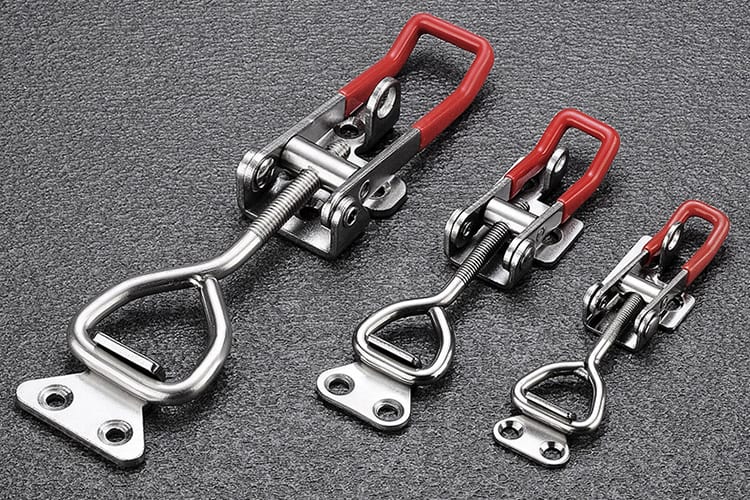From the intricate mechanisms in machinery to the simple tools we use in our everyday lives, terms like “toggle” and “latch” frequently appear. While often used interchangeably, these two terms have distinct differences that can impact the function and application of various devices.
Toggles and latches, although bearing similarities in function—primarily in holding or locking mechanisms in place—possess distinct operational mechanics. Toggles generally operate using leverage, where a small force applied at one end results in a larger force at the other. Latches, on the other hand, primarily serve to keep doors, gates, or lids closed by fitting into a corresponding piece, often with a simple mechanism that’s manually engaged or disengaged.
Navigating the intricate world of mechanical terms can be perplexing. However, understanding the nuances of such terms can aid in the selection of the appropriate tools or mechanisms for specific tasks.

Toggles: An Overview
Toggles operate based on a principle of leverage. They use a pivot and lever system, where a small movement or force at one point translates into a larger movement or force at another point. This characteristic ensures that toggles can hold significant weight or pressure with minimal initial force. One of the most common applications of toggles is in toggle clamps, devices that hold objects tightly to prevent movement or separation during processes such as cutting or welding.
Toggles have a wide range of industrial applications, from holding machine parts in place to serving as safety mechanisms in equipment. Their leverage-based design ensures reliability, strength, and consistent performance.
Latches: An Insight
Latches are simple mechanical devices that secure two components together. They work by fitting into a corresponding piece or notch, ensuring that doors, lids, or gates stay closed. A latch typically consists of a bolt or metal bar that is positioned into a catch or recess.
Latches are ubiquitous and can be found in homes, offices, vehicles, and numerous other settings. Their primary purpose is to provide security or to ensure that a particular component remains shut. From simple door latches to intricate locking mechanisms, the principle remains consistent: to secure and hold in place.
Comparing Operational Mechanics
While both toggles and latches are designed to hold or lock, their operational mechanics differ. Toggles rely on the principle of leverage, allowing them to exert substantial force from a minimal initial input. Latches, in contrast, depend on direct engagement with a corresponding piece, providing security through alignment and fit.
Functionality and Applications
The choice between a toggle and a latch often depends on the specific requirements of a task. Toggles, given their leverage capabilities, are ideal for situations requiring consistent and strong force. Latches are more suited for securing doors, gates, or compartments, ensuring they remain closed.
Durability and Maintenance
Both toggles and latches, due to their mechanical nature, require periodic maintenance. Regular inspections, cleaning, and lubrication can ensure longevity and optimal performance. Any signs of wear, corrosion, or damage should be addressed promptly to prevent failures.
Safety Considerations
Safety is paramount when working with mechanical devices. For toggles, ensuring they’re properly engaged and locked is crucial to prevent mishaps. With latches, regular inspections for signs of damage or misalignment can prevent unintended openings or failures.
Conclusion
Toggles and latches, while serving similar locking or holding purposes, differ significantly in their operational mechanics and applications. Their unique attributes make them suitable for specific tasks, with toggles excelling in leverage-based applications and latches ensuring secure closures. As with any mechanical device, regular maintenance and safety considerations are vital.
For those in search of high-quality toggle mechanisms, MAILONG stands as a leading manufacturer of toggle clamps. With a comprehensive stock available and expedited delivery times, reaching out for a quotation ensures access to top-tier products and services.
You might also be interested:
